Silent Era Home Page > Home Video > The Phantom Carriage

Reviews of silent film releases on home video.
Copyright © 1999-2025 by Carl Bennett
and the Silent Era Company.
All Rights Reserved. |
The Phantom
Carriage
[Körkarlen /
The Phantom Chariot /
The Stroke of Midnight]
(1921)
|
Silent era auteur Victor Sjöström matched the artistic success of his earlier film Berg-Ejvind och hans Hustru [The Outlaw and His Wife] (1918) with a film adaptation of a Selma Lagerlöf novel entitled Körkarlen (1921). A simple story of alcoholic decline and spiritual redemption is twisted about and layered by writer-director Sjöström into a supernatural and labyrinthian psychological portrait for actor Sjöström. Director Ingmar Bergman would later cite the film as an intense artistic influence on his own work.
A young nurse (Astrid Holm) lays dying, asking for David Holm (Sjöström) to be brought to her bedside. Holm cannot be found but his wife is guided to the dying woman instead. There, Holm’s wife (Hilda Borgström) sets aside her unexpected anger in a moment of gentleness and compassion with the young woman. Meanwhile, Holm and two drunkards are awaiting the arrival of the New Year as an excuse for a bout of merry drunkeness. To pass the time, Holm tells a story of his friend Georges (Tore Svennborg) who was usually a happy fellow but became glum one former New Year’s Eve. Georges believed that the last man who died on New Year’s Eve is condemned to drive the Phantom Carriage, collecting the souls of the dead, for the coming year.
Before midnight arrives Holm is found but is not persuaded to see the dying woman. His drunken companions attempt to convince him to go to her, and Holm refuses. The coercion attempt escalates into a brawl and Holm is killed — just at the stroke of midnight. The phantom carriage arrives and the ghostly driver, Georges, explains to Holm’s soul that he, David, must take his place as the deathly driver. It is the payback for all the drunken evil that Holm chose to do during his lifetime, under Georges influence, that eventually landed him in prison. Georges reviews Holm’s spiraling progress downward.
Set to be released from prison, Holm learns that his brother had followed his own alcoholic example and, in a drunken brawl, killed a man. The prison chaplain (Nils Aréhn) believes David culpable for the manslaughter and that Holm should serve the remainder of his brother’s sentence. Years later, Holm is released from prison and returns to his home to discover his family gone. Blaming his wife instead of himself, he vows to make her suffer.
Having tracked down his family to a small town, Holm returns to excessive drinking and at a rescue mission encounters Edit, the young nurse. Enthusiastically she mends his torn coat late into the night, Edit is met with cruelty the next morning when Holm quickly undoes her work with a tear and a rip. Her future entreaties for his redemption are met with more cynical and apathetic cruelty.
Forced by the phantom driver, David’s ghostly soul is brought to the dying Edit who pleads for his absolution. Holm becomes desperate for her forgiveness. In the film’s most emotionally deft turn of events, Holm is led to his own home where his wife is on the verge of murdering their children to end the family’s further suffering of their father’s cruelty.
Körkarlen is a forerunner of the multilayered flashback narrative technique that would later be taken to the Nth degree in Rekopis znaleziony w Saragossie [The Saragossa Manuscript] (1965). While the technique is a standard narrative device today, the flashback must have been perceived as a challenge to American audiences, as American distributor Metro Pictures Corporation reedited the film into a chronologically logical narrative running order with fewer flashbacks and released the film in 1922 as The Stroke of Midnight. The only flashbacks left in the reedited narrative being Holm’s New Year’s Eve story about Georges to his drunkard friends with the nested flashback of Georges about the Phantom Carriage, and a flashback of David’s becoming drinking buddies with Georges. Only the footage of the early, happy Holm family life is completely out of order, being tacked onto the end of the film for a Hollywood-style happy ending.
— Carl Bennett
|
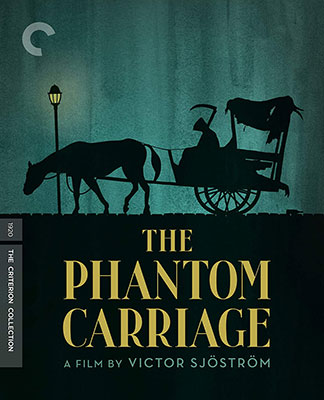 The Criterion Collection The Criterion Collection
2011 Blu-ray Disc edition
The Phantom Carriage (1921), color-tinted black & white and color-toned black & white, 107 minutes, not rated.
The Criterion Collection, CC2051BD (collection number 579), UPC 7-15515-08601-1, ISBN 978-1-60465-474-5.
One single-sided, dual-layered, Region A Blu-ray Disc; 1.33:1 aspect ratio picture in pillarboxed 16:9 (1920 x 1080 pixels) 24 fps progressive scan image encoded in SDR AVC format at 34.2 Mbps average video bit rate; DTS-HD Master Audio 2.0 stereo sound encoded at 2.6 Mbps audio bit rate, and DTS-HD Master Audio 3.0 stereo sound encoded at 2.6 Mbps audio bit rate (Bye score), DTS-HD Master Audio 2.0 stereo sound encoded at 2.3 Mbps audio bit rate, and LPCM 2.0 stereo sound encoded at 2.3 Mbps audio bit rate (KTL score); Swedish language intertitles, optional English language subtitles; 12 chapter stops; standard BD keepcase; $39.95.
Release date: 27 September 2011.
Country of origin: USA
Ratings (1-10): video: 8 / audio: 8 / additional content: 7 / overall: 8.
|
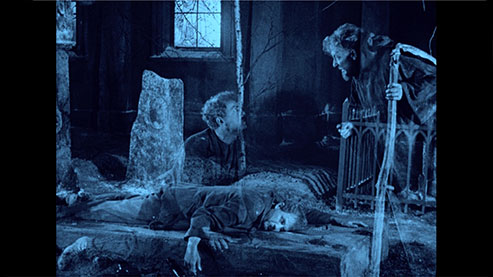
This Blu-ray Disc edition has been transfered in high-resolution digital video from very-good 35mm archival print materials. The picture is evenly-balanced in its greyscale range with color-tints and color-toning applied. There is a very small amount of dust and speckling left in the picture, with some frame jitters and minute exposure fluctations remaining. The overall viewing experience is very-good.
The film is accompanied by two music scores: one is a fine score by Swedish composer Matti Bye performed by a small emsemble, and the other an atmospheric electronic score by KTL.
The supplemental material includes audio commentary by film historian Casper Tybjerg, an interview with Ingmar Bergman excerpted from Victor Sjostrom: A Portrait, “The Bergman Connection,” an original visual essay by Peter Cowie, and a booklet featuring an essay by screenwriter and filmmaker Paul Mayersberg.
This is our recommendation as the best-available home video edition of the film.
|
|
This Region A Blu-ray Disc edition is available directly from . . .
|

|
|
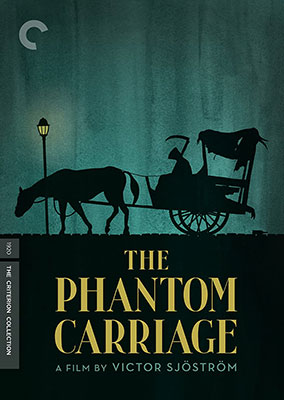 The Criterion Collection The Criterion Collection
2011 DVD edition
The Phantom Carriage (1921), color-tinted black & white and color-toned black & white, 107 minutes, not rated.
Criterion Collection, CC2052D (collection number 579),
UPC 7-15515-08611-0, unknown ISBN number.
One single-sided, dual-layered, Region 1 NTSC DVD disc; 1.33:1 aspect ratio picture in full-frame 4:3 (720 x 480 pixels) interlaced scan image encoded in SDR MPEG-2 format at ? Mbps average video bit rate (capable of progressive scan upscaling to ? fps); Dolby Digital (AC3) 2.0 stereo sound encoded at ? Kbps audio bit rate; Swedish language intertitles, optional English language subtitles; chapter stops; standard DVD keepcase; $29.95.
Release date: 27 September 2011.
Country of origin: USA
|
|
This DVD edition has been mastered from a high-resolution video transfer from 35mm archival print materials.
The film is accompanied by two music scores: one is a fine score by Swedish composer Matti Bye performed by a small emsemble, and the other an atmospheric electronic score by KTL.
The supplemental material includes audio commentary by film historian Casper Tybjerg, an interview with Ingmar Bergman excerpted from Victor Sjostrom: A Portrait, “The Bergman Connection,” an original visual essay by Peter Cowie, and a booklet featuring an essay by screenwriter and filmmaker Paul Mayersberg.
|
|
This Region 1 NTSC DVD edition is available directly from . . .
|

|
|
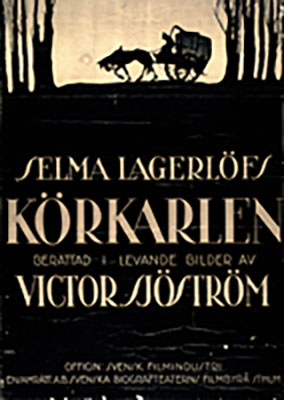 Svensk Filmindustri International Svensk Filmindustri International
200? DVD edition
Körkarlen (1921), color-toned black & white and black & white, 106 minutes, Classification U.
Svensk Filmindustri International,
unknown catalogue number, unknown UPC number.
One single-sided, dual-layered, Region 2 PAL DVD disc; 1.33:1 aspect ratio picture in full-frame 4:3 (720 x 576 pixels) interlaced scan image encoded in SDR MPEG-2 format at ? Mbps average video bit rate (capable of progressive scan upscaling to ? fps); Dolby Digital (AC3) 2.0 stereo sound encoded at ? Kbps audio bit rate; Swedish language intertitles, optional English, French, German, Italian and Portuguese language subtitles; chapter stops; standard DVD keepcase; £24.99.
Release date: 200?
Country of origin: Sweden
|
|
This PAL DVD edition is likely the best available European home video edition of Körkarlen.
North American collectors will need a region-free PAL DVD player capable of outputting an NTSC-compatible signal to view this edition.
|
This Region 2 PAL DVD edition has been discontinued
and is . . .
|

|
|
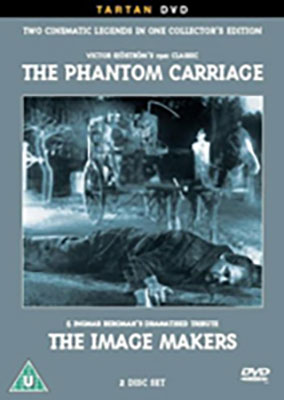 Tartan Video Tartan Video
2008 DVD edition
The Phantom Carriage (1921), color-toned black & white and black & white, 107 minutes, BBFC Classification U, with The Image Makers [Bildmakarna] (2000), color, 100 minutes, BBFC Classification 15.
Tartan Video, TVD3751, unknown UPC number.
One single-sided, dual-layered, Region 2 PAL DVD disc; 1.33:1 aspect ratio picture in full-frame 4:3 (720 x 576 pixels) interlaced scan image encoded in SDR MPEG-2 format at 4.5 Mbps average video bit rate (capable of progressive scan upscaling to ? fps); LPCM 2.0 stereo sound (Bye score) and Dolby Digital 2.0 stereo sound (KTL score); Swedish language intertitles, optional English language subtitles; 5 chapter stops; and one single-sided, single-layered, Region 2 PAL DVD disc; 1.33:1 aspect ratio picture in full-frame 4:3 (720 x 576 pixels) interlaced scan image encoded in SDR MPEG-2 format at 4.5 Mbps average video bit rate (capable of progressive scan upscaling to ? fps); Dolby Digital (AC3) 2.0 stereo sound encoded at 192 Kbps audio bit rate; Swedish language dialogue, optional English language subtitles; 16 chapter stops; two-disc DVD keepcase; unknown suggested retail price.
Release date: 11 February 2008.
Country of origin: England •
Ratings (1-10): video: 7 / audio: 8 / additional content: 7 / overall: 7.
|
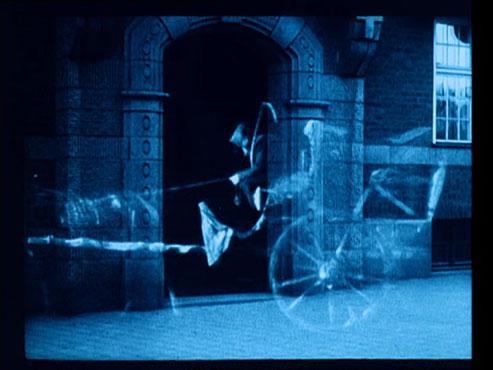
This PAL DVD edition is likely the best available European home video edition of Körkarlen (or perhaps the Svensk Filmindustri edition noted above).
The film is accompanied by two music scores: one is a fine score by Swedish composer Matti Bye performed by a small emsemble, and the other by KTL (six-minute promotional excerpt only). The music presented in a very-high uncompressed audio bit rate (unusual for a DVD release), with the KTL excerpt in Dolby Digital sound.
Supplemental material includes The Image Makers [Bildmakarna] (2000) written by Per Olov Enquist and directed by Ingmar Bergman, a fictionalized encounter between director Victor Sjöström, actress Tora Teje and writer Selma Lagerlöf produced on videotape.
While this DVD edition is out-of-print, it is our current recommendation for European collectors. North American collectors will need a region-free PAL DVD player capable of outputting an NTSC-compatible signal to view this edition.
|
This Region 2 PAL DVD edition has been discontinued
and is . . .
|

|
|
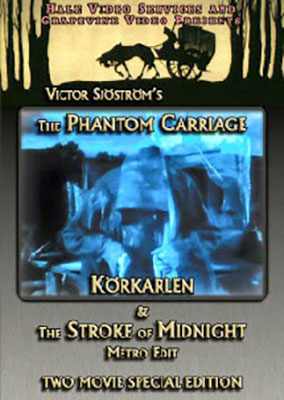 Grapevine Video Grapevine Video
2008 DVD edition
The Phantom Carriage (1921), color-toned black & white and black & white, 74 minutes, not rated, and The Stroke of Midnight [Körkarlen] (1921) [1922 USA release version], color-toned black & white and black & white, 74 minutes, not rated.
Hale Video Services and Grapevine Video,
no catalog number, UPC 8-42614-10221-9.
One single-sided, dual-layered, Region 0 NTSC DVD-R disc; 1.33:1 aspect ratio picture in full-frame 4:3 (720 x 480 pixels) interlaced scan image encoded in SDR MPEG-2 format at ? Mbps average video bit rate (capable of progressive scan upscaling to 60 fps); Dolby Digital (AC3) 2.0 stereo sound encoded at ? Kbps audio bit rate; English language intertitles, no subtitles; 17 chapter stops (The Phantom Chariot) and 19 chapter stops (The Stroke of Midnight); standard DVD keepcase; $14.95.
Release date: 2008.
Country of origin: USA
Ratings (1-10): video: 5 / audio: 8 / additional content: 5 / overall: 6.
|
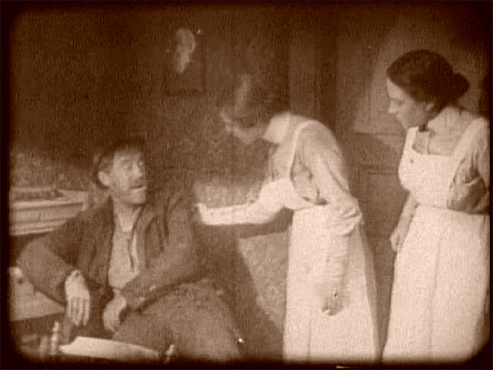
This DVD-R edition, produced for home video by E. Hunter Hale, features two versions of Victor Sjöström’s film Körkarlen (1921); the first in the original Swedish release version, the second being the American release version as edited by Metro Pictures Corporation.
The original version is presented from a good to very-good 16mm reduction print, with English language intertitles, that is fairly speckled and dusty, with scratches, timing marks and other emulsion damage from the archival source print. However, the usual plugged-up shadows of many 16mm prints are not a problem here. Most of the exposures in the source print remain fairly balanced across a broad range of greytones. The video transfer itself runs at slightly faster than natural speed — not quite comical, but some of the edits within a sequence just race by with thoughtless disregard. The transfer could have been slowed down a couple of frames a second to render a more natural and pleasing pace.
Our criticism of this edition is chiefly of the lower-than-usual digital resolution of the picture. The video transfer from the source print may have been more than adequate but the digital mastering of the disc, which may have looked OK when it was being rendered on a PC, looks only so-so on a standard resolution television and noticeably rough on a high-definition television. For those who may not see the blocky aliasing of image details around contrasting angles and curves or around the typefont of the intertitles nor see the smeary coarseness of rendered greytones while the picture is moving, any still frame will reveal an image rife with digital compression artifacts. We suspect that the choice to include two versions of the film on one DVD-R disc with its limited data capacity, rather than release the edition on two discs, led to the over-compression of the picture information in the digital mastering of the DVD.
Video-based expositional intertitles apparently replace original intertitles or narrative sections of the film that were missing in the source print.
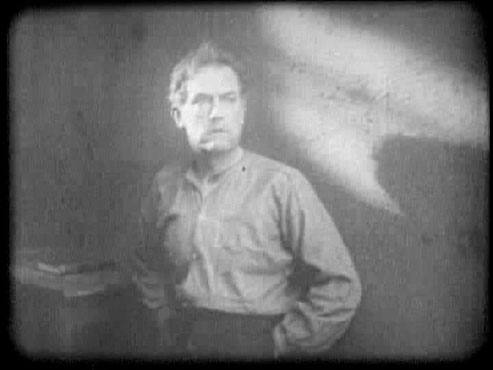
The USA release version, known as The Stroke of Midnight, has been mastered from a good 16mm reduction print, which is rather greyed out. As with the first presentation on this disc, the picture is highly aliased due to the low DVD encoding resolution. This version differs from the first presentation in the reediting of the film (changing the order of sequences and individual shots to discard the narrative flashback structure of the original in favor of a chronological timeline structure) as carried out by Metro in 1922. For instance, the David Holm prison sequence that appears 26 minutes into the film in the first version starts the film in the second version. Surprisingly, the running time is nearly identical in this home video edition for both versions.
The film is presented (both versions) with musical accompaniment performed on Wurlitzer theater organ by Blaine Gale, recorded during a live presentation of the film at the Organ Loft in Salt Lake City, Utah. While the musical performance is good, there will be a few distracting coughs from the audience, and the recording mics were placed in such a manner to capture perhaps too much of the mechanical sounds of the organ’s operation. At times it sounds as though someone is closing folding chairs in the background. Nope, that’s just the sound of a theater organ.
The disc is supplemented with the source novel Körkarlen by Selma Lagerlöf, translated as Thy Soul Shall Bear Witness (yet another English title for the film itself). The text of the novel is presented in a series of still frames, divided by chapters.
Despite the very-good quality of the music and the reasonable quality of the source prints, our overall impression of this edition is brought down a bit by the low-resolution picture. The above frame capture shows the smeary, cross-hatched low-resolution picture. Is this disc still watchable? Yes, but the edition could have been of higher quality had another decision been reached. Perhaps this edition could be remastered at an acceptable DVD resolution and released on two discs so that enthusiasts may enjoy the film presentation more than is possible from this existing disc.
|
|
This Region 0 NTSC DVD-R edition is available directly from . . .
|

|
|
|
Other silent era VICTOR SJÖSTRÖM films available on home video.
Other SWEDISH FILMS of the silent era available on home video.
|
|

LINKS IN THIS COLUMN
MAY TAKE YOU TO
EXTERNAL WEBSITES
•
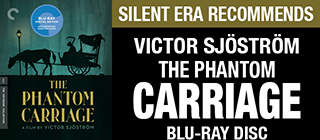
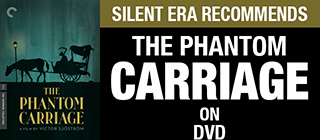
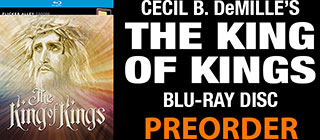
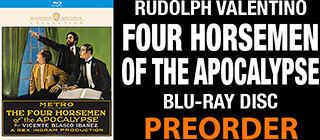
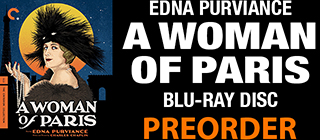
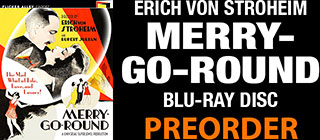
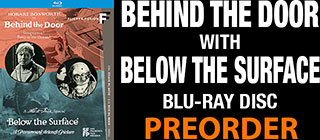
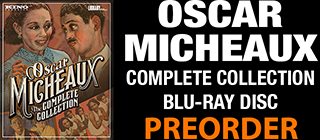
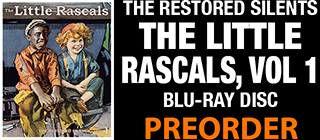
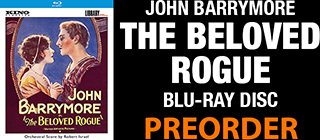
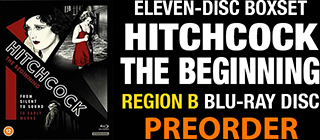
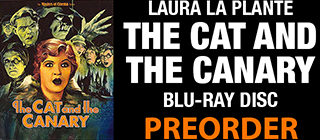
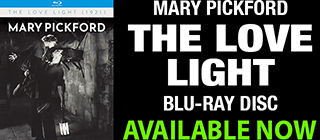
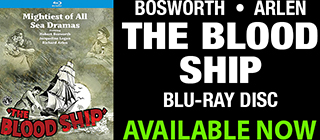
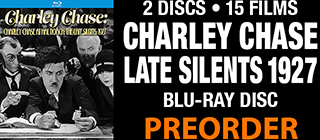
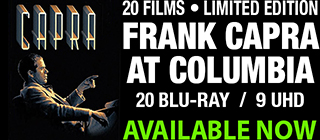
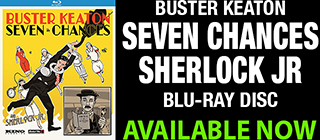
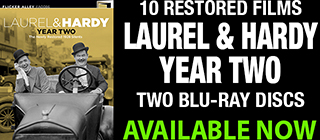
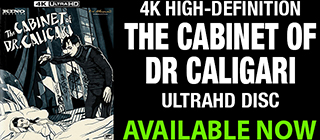
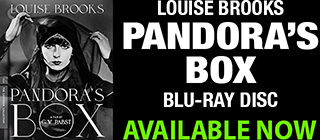
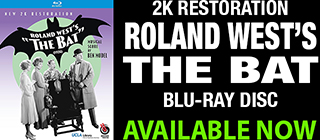
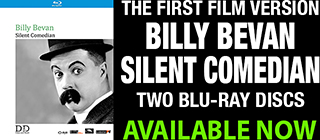
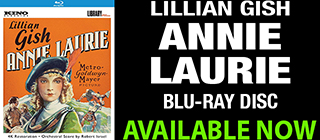
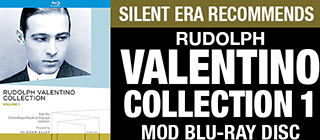




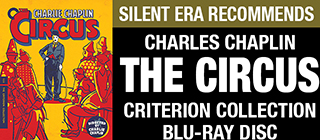
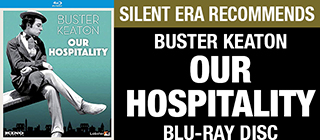


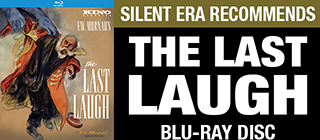
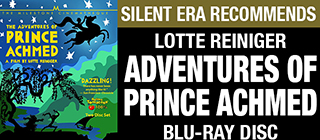
•
|




































